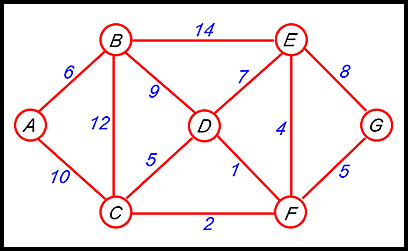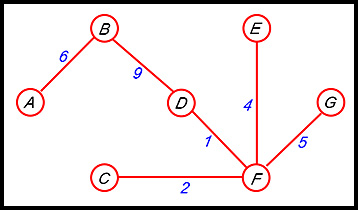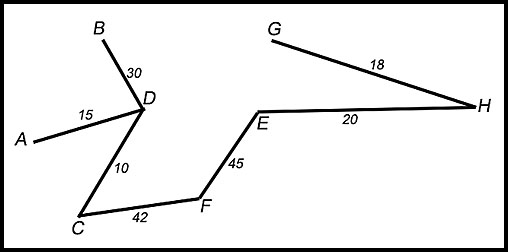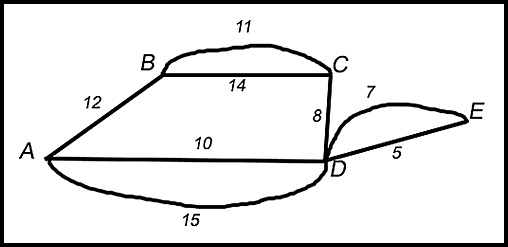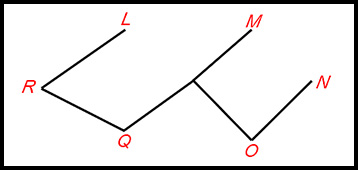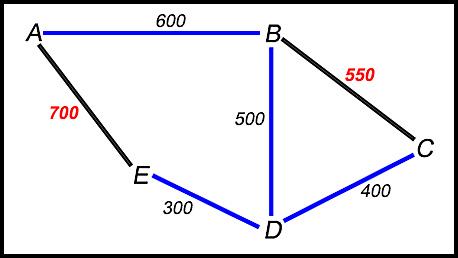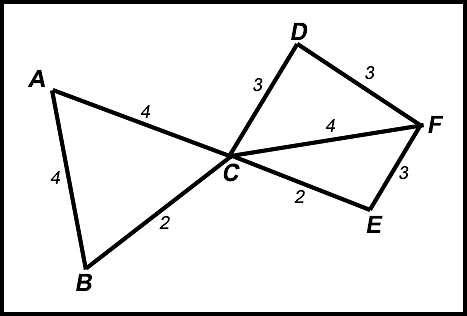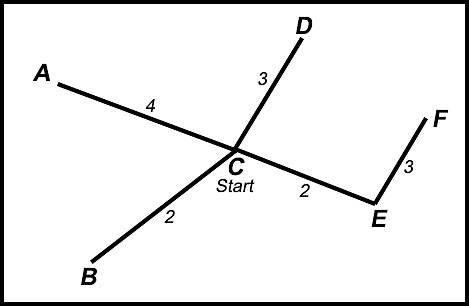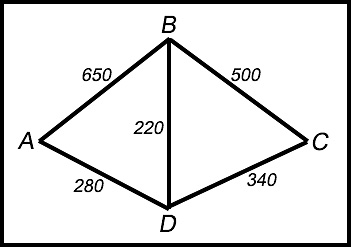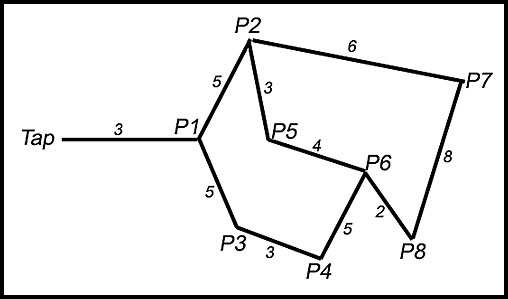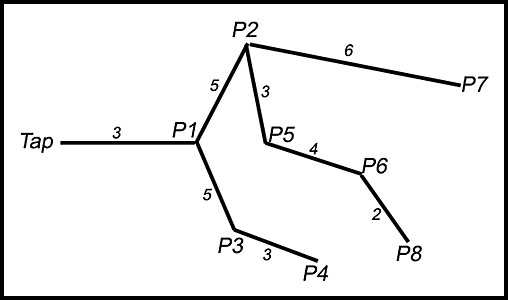Where the techniques of Maths
are explained in simple terms.
Networks and Graph Theory - Minimum Spanning Trees.
Test Yourself 1 - Solutions.
- Algebra & Number
- Calculus
- Financial Maths
- Functions & Quadratics
- Geometry
- Measurement
- Networks & Graphs
- Probability & Statistics
- Trigonometry
- Maths & beyond
- Index
Remember - with minumum spanning trees, we are including all vertices but looking for the minimum sum of the weights on the edges.
| Using Kruskal's algorithm. | 1. Prepare a Kruskal's table (we were not given a starting point).
|
The minimum spanning tree is shown below:
The minimum weight of the spanning tree is 27. |
||||||||||||||||||||||||||||||||||||||||||
2. 
Prepare a Kruskal's table (we were not given a starting point).
|
The minimum spanning tree is shown below:
The minimum weight of the spanning tree is 11. |
|||||||||||||||||||||||||||||||||||||||||||
3. As no starting point has been given, we use Kruskal's algorithm. Start with the smallest edge (here CD).
The total length is 180 m. Hence the cost of the cables is $9,000. |
The minimum spanning tree to include every holiday cabin is
|
|||||||||||||||||||||||||||||||||||||||||||
4. 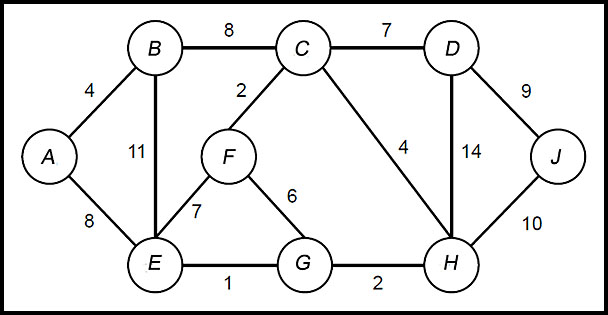
|
The minimum spanning tree is:
Minimum weight is 37. |
|||||||||||||||||||||||||||||||||||||||||||
5.
|
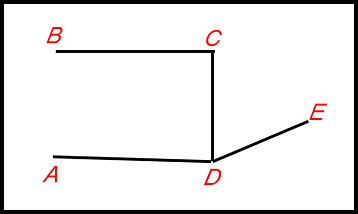
The spanning network has a length of 34 kms |
|||||||||||||||||||||||||||||||||||||||||||
6. 
|
The spanning network has a length of 142 kms. |
|||||||||||||||||||||||||||||||||||||||||||
| 7. | ||||||||||||||||||||||||||||||||||||||||||||
8. 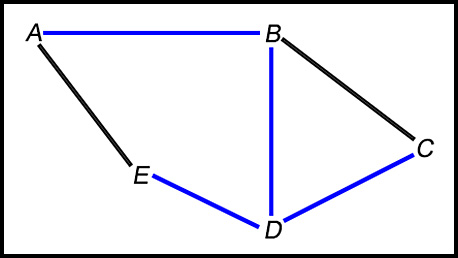
|
(i) The values should be chosen so that:
(ii) If AE has a greater value than AB, it would be excluded from the path at the first stage. It could not come back in later as it would then create a cycle. If BC has a greater value than BD, it would be excluded from the path at the second stage. It could not come back in later as it would then create a cycle. |
9. |
(i) Starting at vertex C:
|
||||||||||||||||||||||||||||||||||||||||||
(ii) Starting at vertex E:
Weight of this network is also 14 and it is drawn the same. |
|
||||||||||||||||||||||||||||||||||||||||||
10.
Draw a picture!!
|
Prepare a Prim's table (we were given a starting place):
Note: the blue values are the shortest paths from that vertex. (i) Shortest path, starting at A, is 1,000 metres. (ii) The route for the truck is A-D-B-C. |
||||||||||||||||||||||||||||||||||||||||||
11.
|
NOTE: the P2P7 edge is not considered until the last choice (i.e. against P8P7) as it is not the smallest edge from P2.
The length of piping required is 31 metres. |
||||||||||||||||||||||||||||||||||||||||||
12. Same diagram as for Q4 but the starting point is now J.
|
|
||||||||||||||||||||||||||||||||||||||||||
13.
|
|||||||||||||||||||||||||||||||||||||||||||
| 14. | |||||||||||||||||||||||||||||||||||||||||||
| 15. | |||||||||||||||||||||||||||||||||||||||||||
| 16. | |||||||||||||||||||||||||||||||||||||||||||
17. (i) Using Kruskal, the minimum spanning tree has a weight of 39 and is as follows:
|
(ii) Using Prim and starting at vertex E, the minimum spanning tree has a weight of 41 and is as follows: |
